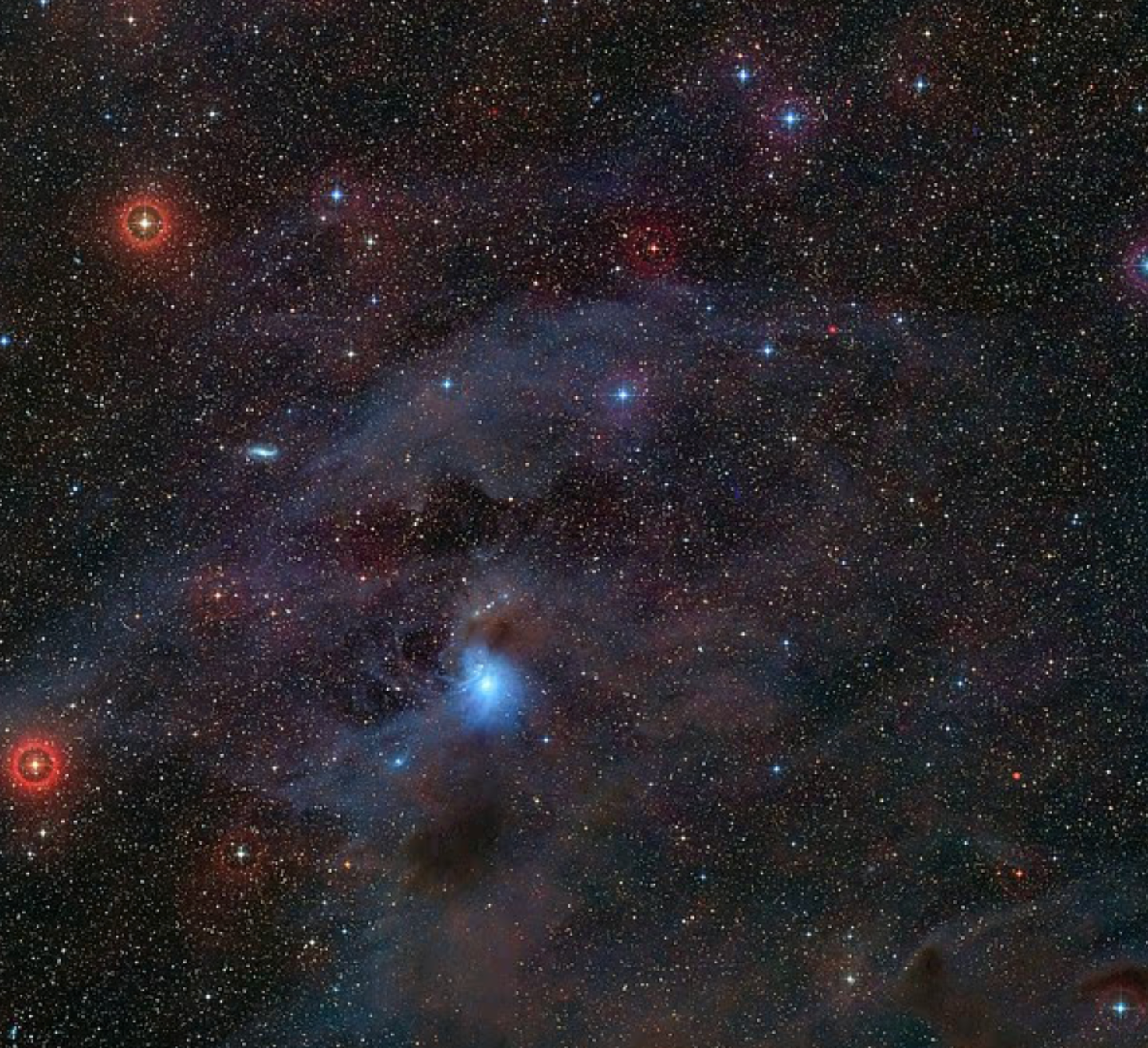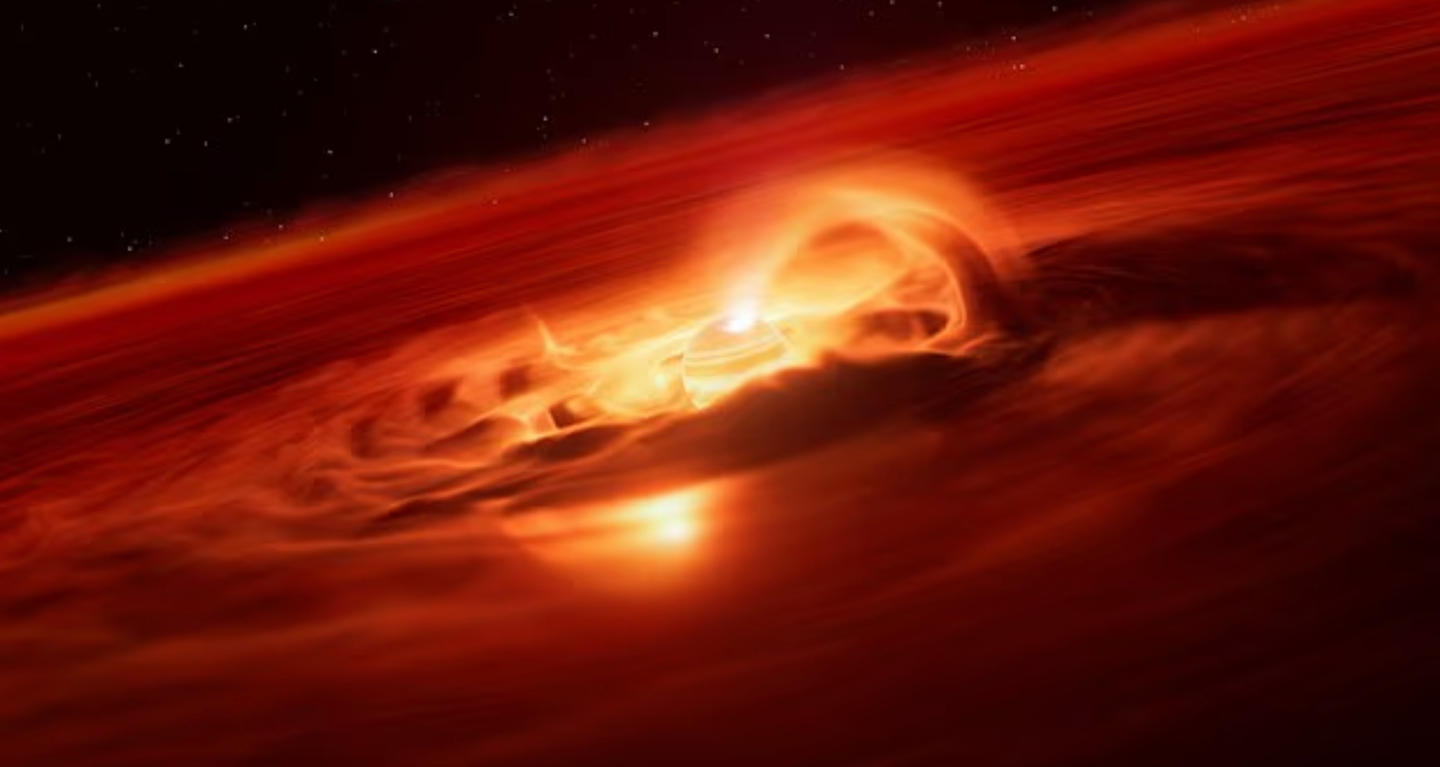Experts say the mysterious discovery 'blurs the line between stars and planets'
Scientists have been left scratching their heads after discovering a 'rogue' planet that appears to be growing at a staggering speed. The strange world has entered what experts are calling a record-breaking “growth spurt,” leaving even experienced astronomers amazed by its behavior.
While researchers have studied our solar system in great depth, there’s still so much to uncover about the countless planets and celestial bodies beyond it. New discoveries continue to challenge what we think we know about how planets form and evolve in the depths of space.
Recently, astronomers using the European Southern Observatory’s Very Large Telescope in Chile focused on a planet about 620 light-years from Earth in the constellation Chamaeleon. What they found has puzzled the scientific community—it doesn’t seem to behave like any known planet.
The object, named Cha 1107-7626, is unlike most planets because it doesn’t orbit a star. Instead, it drifts freely through space, consuming massive amounts of gas and dust as it travels—around six billion tons every second, according to the researchers’ calculations.
A new study from European scientists, published in The Astrophysical Journal Letters, revealed that Cha 1107-7626 has a mass between five and ten times that of Jupiter. What makes it even more fascinating is how rapidly it’s growing—its pace of expansion has accelerated to unprecedented levels.
Scientists noted that the planet is now growing about eight times faster than it was only months ago. They believe this makes it the fastest planetary growth spurt ever recorded, breaking all previous observations and raising questions about what drives such rapid development in deep space.

Víctor Almendros-Abad, lead author of the study and an astronomer at the Astronomical Observatory of Palermo, described the discovery by saying: "People may think of planets as quiet and stable worlds, but with this discovery we see that planetary-mass objects freely floating in space can be exciting places."
Despite their progress in studying the planet, researchers admit there are still many mysteries surrounding it. They’ve learned more about its mass and behavior, but the true cause of its unusual activity remains unclear.
Co-author Aleks Scholz, an astronomer at the University of St Andrews in the UK, explained the ongoing debate among scientists, saying: "The origin of rogue planets remains an open question: are they the lowest-mass objects formed like stars, or giant planets ejected from their birth systems?"
According to researchers, Cha 1107-7626 seems to grow in a way that resembles how young stars develop—by feeding on the matter around them. Much like stars, it goes through bursts of sudden, intense growth that appear to fuel its expansion.
In addition, it has an unusually powerful magnetic field for an object of its size. This magnetic force seems to play a key role in helping it pull in and absorb surrounding material, effectively “feeding” on its environment at a level rarely seen in planets.
The rapid growth appears to have changed its chemistry as well. At first, astronomers detected water vapor in its atmosphere. However, after the latest growth surge, that water vapor could no longer be found—behavior more commonly observed in young stars than in planets. This shift has made scientists wonder whether Cha 1107-7626 is even a planet at all, or something in between.

Co-author Belinda Damian commented on the groundbreaking finding, saying: "This discovery blurs the line between stars and planets and gives us a sneak peek into the earliest formation periods of rogue planets."
Speaking to the Daily Mail shortly after the study’s release, Dr. Scholz offered additional insight into what makes this rogue planet so intriguing. He explained that the object seems to be nearing the end of its active growth phase, stating: "This rogue planet is pretty much finished with its growth," He continued: "The really strong growth spurts would have happened earlier, while the object was still enshrouded in dust and gas, invisible to us."
His comments suggest that scientists are catching a rare glimpse of this planet at a unique point in its evolution—just as it transitions from its growth stage into a more stable state.
Dr. Scholz added more context about the timing of their observations, saying: "When we can observe them, they are already close to the finished products. The really exciting early evolution happens when they are embedded in a thick cloud."
He noted that by the time these types of planets become visible to astronomers, much of their chaotic early development is already complete, making discoveries like this one especially valuable for understanding how rogue planets are born and evolve.

